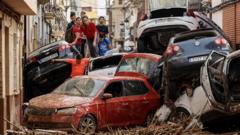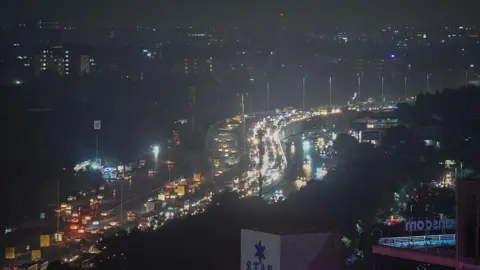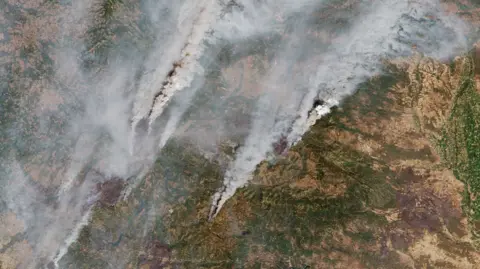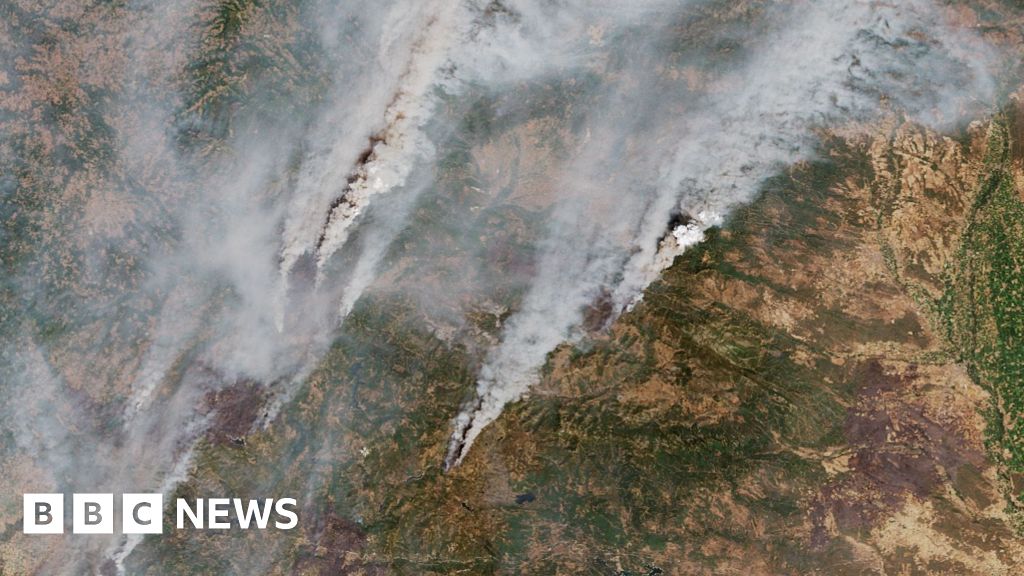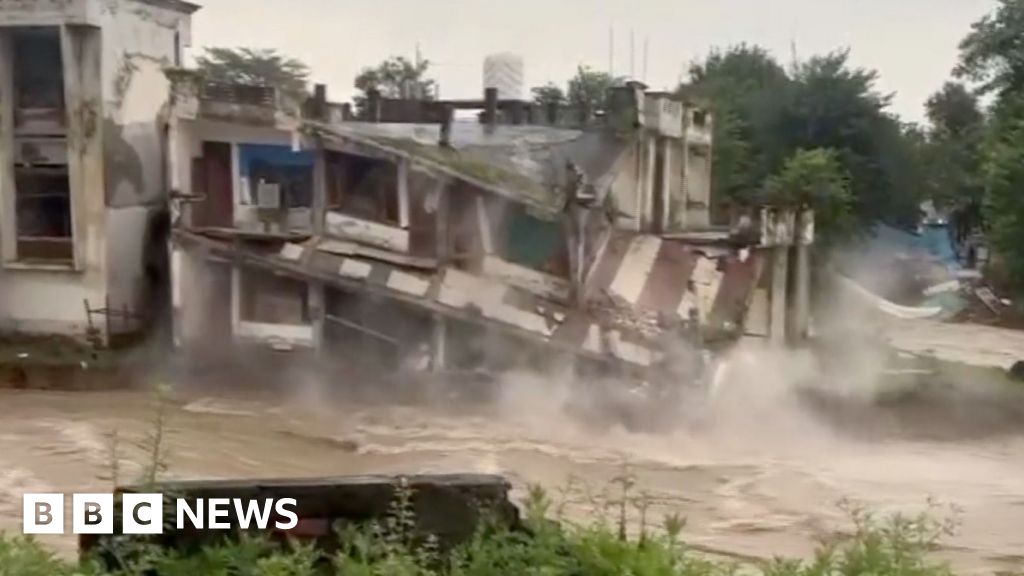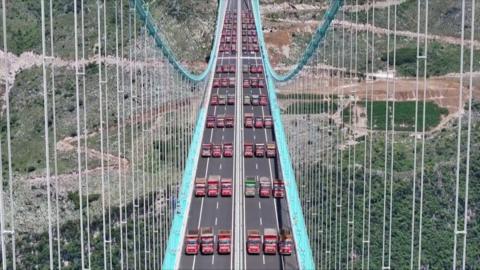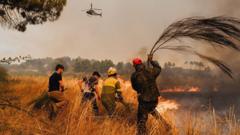The Spanish region of Valencia has been deeply shaken by catastrophic flash floods that have claimed the lives of over 200 individuals, predominantly in the coastal area. The town of Paiporta, which houses around 25,000 residents, has been particularly hard hit, reporting at least 62 fatalities. The high death toll has left many questioning the factors which contributed to such a tragedy.
Several aspects have been cited, including drivers becoming trapped in vehicles, inadequate governmental planning, and the extreme rainfall intensified by climate change. The regional civil protection agency sent out emergency alerts to Valencia residents after 20:00 local time on Tuesday, just as floodwaters began to surge through streets and residential areas. Many of those who succumbed to the flooding were on their way home from work, caught off guard by the rapid onset of disaster.
Dramatic footage captured the initial waves of floodwater rushing through Paiporta even as vehicles were still navigating the streets. While parts of the region experienced heavier rainfall, Paiporta's unique topography, characterized by a central ravine, heightened the disaster's impact.
Mayor Maribel Albalat expressed concerns over the lack of flood preparedness, citing an abundance of ground-level apartments. Six elderly residents perished in a care home that was inundated after water swept into the building from the ground floor. "In Paiporta we don’t tend to have floods and people aren’t afraid," Albalat noted, hinting at a certain complacency that may have contributed to the loss of life.
The unfortunate design of many garages also turned them into fatal traps. Local residents typically move to garages during rainfalls to avoid flooding concerns, which led to the tragic discovery of seven bodies in a residential garage on the city's outskirts. The A3 motorway, a major route between Valencia and Madrid, became stranded with vehicles as the flooding escalated, leaving drivers confused about whether to flee or stay inside.
Survivors recounted harrowing experiences, one recalling an individual who tied himself to a lamppost to avoid being swept away. Yet, as authorities continue to respond to the crisis, concerns remain over other potential victims in submerged vehicles—hundreds still overturned, according to local officials.
Additional reasons for Valencia's vulnerability include its high population density and an alarming shortage of rainfall throughout the dryer months, resulting in ground saturation levels that were ill-equipped to manage the inundation. Researcher Pablo Aznar lamented the extensive urbanization in the region, saying its impervious surfaces significantly heighten flooding risks.
Moreover, the influence of climate change has been significant. In an early study, World Weather Attribution scientists revealed that rainfall in the area increased by 12% due to climate change, and such extreme events have become twice as likely with warming temperatures.
Residents in other parts of Spain are now being cautioned against leaving their homes, as further rain has begun to roll in. The country mourns for the victims as investigations continue into the systemic failures that led to this unthinkable disaster.
Several aspects have been cited, including drivers becoming trapped in vehicles, inadequate governmental planning, and the extreme rainfall intensified by climate change. The regional civil protection agency sent out emergency alerts to Valencia residents after 20:00 local time on Tuesday, just as floodwaters began to surge through streets and residential areas. Many of those who succumbed to the flooding were on their way home from work, caught off guard by the rapid onset of disaster.
Dramatic footage captured the initial waves of floodwater rushing through Paiporta even as vehicles were still navigating the streets. While parts of the region experienced heavier rainfall, Paiporta's unique topography, characterized by a central ravine, heightened the disaster's impact.
Mayor Maribel Albalat expressed concerns over the lack of flood preparedness, citing an abundance of ground-level apartments. Six elderly residents perished in a care home that was inundated after water swept into the building from the ground floor. "In Paiporta we don’t tend to have floods and people aren’t afraid," Albalat noted, hinting at a certain complacency that may have contributed to the loss of life.
The unfortunate design of many garages also turned them into fatal traps. Local residents typically move to garages during rainfalls to avoid flooding concerns, which led to the tragic discovery of seven bodies in a residential garage on the city's outskirts. The A3 motorway, a major route between Valencia and Madrid, became stranded with vehicles as the flooding escalated, leaving drivers confused about whether to flee or stay inside.
Survivors recounted harrowing experiences, one recalling an individual who tied himself to a lamppost to avoid being swept away. Yet, as authorities continue to respond to the crisis, concerns remain over other potential victims in submerged vehicles—hundreds still overturned, according to local officials.
Additional reasons for Valencia's vulnerability include its high population density and an alarming shortage of rainfall throughout the dryer months, resulting in ground saturation levels that were ill-equipped to manage the inundation. Researcher Pablo Aznar lamented the extensive urbanization in the region, saying its impervious surfaces significantly heighten flooding risks.
Moreover, the influence of climate change has been significant. In an early study, World Weather Attribution scientists revealed that rainfall in the area increased by 12% due to climate change, and such extreme events have become twice as likely with warming temperatures.
Residents in other parts of Spain are now being cautioned against leaving their homes, as further rain has begun to roll in. The country mourns for the victims as investigations continue into the systemic failures that led to this unthinkable disaster.

